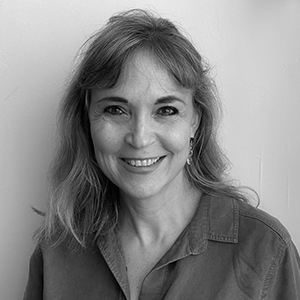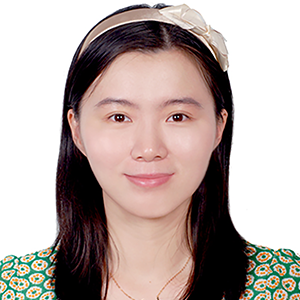NUS-SUTD PhD Symposium in Architecture

MIXED-METHOD RESEARCH ON NEIGHBORHOOD AND URBAN SPACE
Time: 13:30 PM – 16:00 PM.
Venue: Seminar Room 05, SDE1 Floor 4
Reviewers: Will Davis and Chong Keng Hua
Tan Sze Hui Elaine
RECONCILING THE LIVEABILITY-DENSITY NEXUS: RE-DEFINING LIVEABILITY AND THE RENEGOTIATION OF SPACES THROUGH THE COMMUNITY’S LIVED EXPERIENCE IN HIGH-DENSITY RESIDENTIAL ENVIRONMENTS IN HDB TOWNS
Abstract: By definition, Liveability is a problematic construct. Depending on the agents and actors who define it and who have a stake in it, the definition of Liveability (or the ‘ability to live’) is beholden to different standards and assumptions that are highly contextual and culture-specific in reality. Density adds another layer of complexity to the discussion where the issues of physical space and resource limitations, potential social conflict, health, mental well-being and privacy come into play. In cities where density is not an option, and liveability remains a necessity, the challenge of the liveability-density nexus is to move away from a mindset of ‘trade-offs’. A paradigm shift is required –to redefine liveability and to redesign density. Re-defining liveability means to re-examine the current position constructed by the dominant actors and to shift the focus to the very lived experiences of the people and their communities instead. Re-designing density means to re-examine the notion of design as a complete product and to shift the approach towards a more fluid, accommodating and inclusive way of living instead. By re-examining Liveability and Density, this research aims to reconcile the Liveability-Density Nexus. The interplay between Liveability and Density is a constant rebalancing act, shifting anddynamic and calls for an acceptance of transience, flexibility and adaptation. Just as the notion of Liveability is constantly redefined by the community across space and time, so must the design of spaces in high density settings be constantly renegotiated by the very community who inhabits the space. Using Singapore’s housing towns, one of the highest density in the world, as case study, this research aims to examine the shifting liveability-density paradigms as priorities and variables defined by its communities, in order to propose new models of (re)planning and (re)designing high-rise, high-density neighbourhoods from the unit, building to precinct level, to achieve liveable densities for communities.
Keywords: Liveability, Density, Nexus, Community
Speaker: Tan Sze Hui Elaine
Ellenbogen Nirit Rivka
CAPTURING DYNAMIC OCCURRENCE OF PLACE ATTACHMENT AT DISPLACEMENT
Abstract: In response to predominant understanding of place-attachment as static outcome that occurs over a long period of time and resists change, my research takes a processual approach to investigate place-attachment as dynamic phenomenon that accommodates change and enables community’s resilience and mobility.
My research examines the disruptions to communities’ place-attachment resulting from the Selective En-bloc Scheme (SERS) in Singapore, a displacement programme ongoing since 1995, with an objective to capture the dynamic nature of place-attachment over time. I hypothesize that occurrence of place-attachment relates to presence, function and continuity of the adaptive socio-ecological system, which promotes it.
An original methodology proposes a conceptual framework of place-attachment at displacement, which comprises four interdependent dimensions of the socio-ecological system: socio-spatial network, community-ties, engagement/negotiation, and continuity/familiarity, with a heart at their intersection. Theories of assemblages and affordances are employed to explain the dynamic interrelations between these components, focusing on how residents negotiate the place to acquire affordances and construct place-meanings.
As part of ongoing longitudinal study (started in September 2020), this methodology is operationalized through policy review, spatial mapping, first-person observations, surveys, interviews and group discussions with residents and visitors of Tanglin Halt neighborhood, currently undergoing its third and largest displacement project.
Speaker: Ellenbogen Nirit Rivka
 |
Nirit Rivka Ellenbogen is currently a PhD(ARCH) candidate at Department of Architecture, College of Design and Environment, National University of Singapore. She received her Bachelor degree in architecture from the Technion, Institute of Technology, Israel (1991), and practiced in Israel and Singapore. She is a former senior lecturer at Nanyang Polytechnic, School of Design (Singapore, 2010-2019), where she harnessed the power of design, education, collaboration and bottom-up initiatives. She initiated a national design student summit (2017) and guided an award-winning community garden project at North Bridge Road (2018). Her research aims to illuminate dynamic place-attachment to improve urban regeneration/redevelopment processes.
Gabrielle Xinyu ZENG
ART PLACES AND THEIR SOCIAL-ECONOMIC IMPACT IN SINGAPORE AND HONG KONG
Abstract: “Arts have played an intrinsic role to cities and communities, giving them meaning and identities. Intuitively, many will agree that arts give cultural, social and economic value to the cities and communities. The built environment and public spaces are humanized by the presence of arts as they provide a form of dialogue across the different times and linkages between the past, present and future. However, the direct contribution from art or art spaces to the economy and society is often vague and unquantifiable.
My research topic is “Art spaces and their social-economic impact in Singapore and Hong Kong”. The purpose is to provide the stakeholders, both the planners and the artists, an understanding of how arts have an actual impact on the society, community and economy. The similarities and differences in the socio-economic dynamics of the art spaces in Singapore and Hong Kong are also explored.
My research will cover two global cities, namely Singapore and Hong Kong. These two cities shared similar economic standing and were previously British colonies but have different arts environments. The methodologies, such as hedonic regression, artificial neural networks (ANN) and natural language programming (NLP), will be applied to quantify different economic or social benefits. This research is intended to be a leading frontier to give art spaces their rightful place in urban studies. If the results are positive, this will add more weight to the need for urban planners to direct more resources to this area and help to promote art spaces which could eventually lead to higher economic success.”
Speaker: Gabrielle Xinyu ZENG
 |
Zeng Xinyu is a first year Ph.D. student of Architecture and Sustainable Design at the Singapore University of Technology and Design (SUTD), under the supervision of Associate Professor Bige Tuncer. Her research focuses on the socio-economic impact of arts places, by introducing quantitative research methods to arts studies. Xinyu received her master’s degree in engineering from SUTD and a Bachelor of Arts degree from Shanghai Theatre Academy. She has more than 10 years of work experience in marketing.
Yuanwei ZHU
RESEARCH ON THE SPATIAL CHANGES AND PLANNING STRATEGIES OF FUTURE CITIES DRIVEN BY TECHNOLOGICAL DEVELOPMENT
Abstract: Looking back at the previous technological revolutions, we could find that disruptive technology is bound to profoundly impact human life and production methods. And these influences will eventually be projected into the urban space of human production and life, bringing about changes in spatial form and challenges to traditional physical space planning and design in cities. At present, the Fourth Industrial Revolution, marked by Internet industrialization and industrial intelligence, and characterized by technological integration, is profoundly affecting and changing our cities with a series of disruptive technologies. The emergence of this new generation of information technologies, such as big data, cloud computing, artificial intelligence, and the Internet of Things, brings disruptive revolutions in the whole field of urban employment, transportation, public safety, open education, healthcare, family services, and social equity, and promotes the rapid transformation and upgrading of future cities. Based on this background, the study explores various possibilities of future urban spatial development driven by technology. On this basis, this study examines and evaluates the characteristics of different scenarios to identify the aspects of urban planning that can be modified, complemented, and replaced, and proposes corresponding planning response strategies for different scenarios as the basis for the next study.
Speaker: Yuanwei ZHU
 |
Zhu Yuanwei is a second-year Ph.D. student of Architecture at the College of Design and Engineering, National University of Singapore. After 5 years of undergraduate studies in architecture and planning at the School of Architecture, South China University of Technology, China, she worked for the Guangzhou Urban Planning Bureau for 4 years. Then she obtained a master’s degree in urban planning from National Cheng Kung University in Taiwan. Her research fields and interests are mainly in the development of high-tech industrial parks and future urban planning driven by disruptive technology.
Yanhan LIU
DIGITAL INTERVENTIONS ON URBAN PUBLIC SPACE AND ITS EFFECTS ON OUTDOOR ACTIVITIES
Abstract: An increasing number of interventions and their omnipresence in daily life prompt a shift in the traditional uses of urban public space and redefine outdoor activities in various ways. This review aimed to clarify and understand the emerging phenomenon of digital interventions in urban public space and explore the effects of digital interventions on outdoor activities. Using the categories of outdoor activities classified by Jan Gehl, 32 studies were selected to understand and analyse digital interventions in urban public spaces. The main findings are that: (1) the types of digital interventions in urban public space are diverse and could be divided into three categories: hardware, software, and mix-use; (2) studies on digital interventions in urban public space have various focuses, such as commercial attractiveness, public engagement, community purpose, and social interactions; (3) different types and purposes of digital interventions provide various opportunities to stimulate outdoor activities, especially for the social activities; and (4) aside from different purposes, the effects of digital interventions on outdoor activities also depends on other factors, such as the location of interventions, the location of public spaces, the contents of the interventions, and the user groups. This review provides a comprehensive understanding of digital interventions in urban public space and analyses its effects on outdoor activities to let urban designers and planners rethink the relationship between digital interventions and urban public space.
Speaker: Yanhan LIU
 |
Yanhan Liu is a first-year Ph.D. student in the Department of Architecture, National University of Singapore. She holds a Master of Science in Architecture from Syracuse School of Architecture and has worked in the fields of architecture and urban design, focusing on urban and regional regeneration projects. Her research interests lie primarily in physical public space and digital interventions, including how spatial experience is mediated by digital technologies. Recently, her research work has focused on exploring the relationship between outdoor activities and digital interventions in urban public spaces.